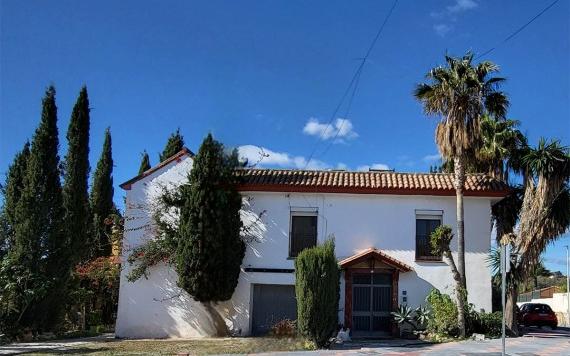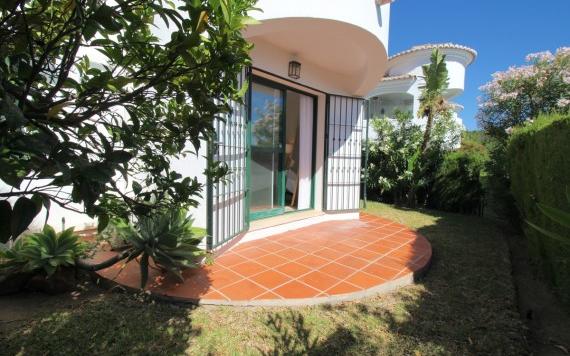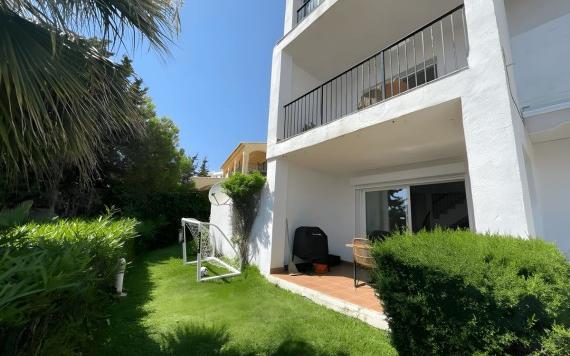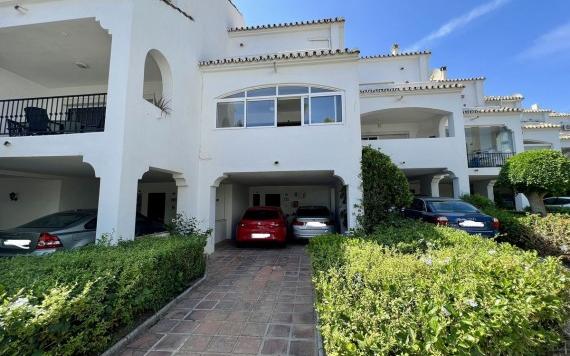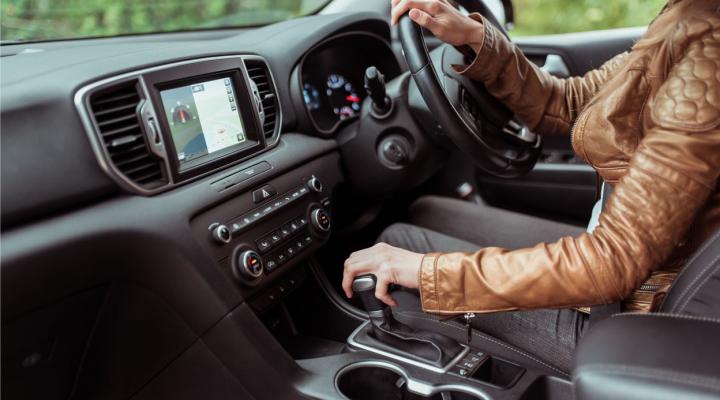
If you’ve found the Spanish property of your dreams and are ready to make the big move, then you may be worried about leaving more than just your friends and family behind. When packing up their possessions, an increasing number of ex pats are choosing to bring their beloved cars to Spain with them (as well as their nick knacks and the content of their wardrobe!) But if you’re planning to bring a car with UK plates to Spain then you need to know the current rules and regulations surrounding driving it in Spain, and ultimately registering it onto Spanish plates. With that in mind, here’s everything you need to know:
Driving a Car with UK Plates in Spain
It is perfectly legal to drive a car with UK plates in Spain, but there are some caveats. If you are not a Spanish resident, then you can drive your car into Spain year-round. But if you live in Spain, or if you spend more than 183 days of the year in the country then you will either have to drive your car back to the UK or register it in Spain.
The Spanish traffic police are well known for appearing to be quite intimidating, and the fines for not adhering to Spanish driving regulations can be fairly hefty. You should also remember that in a sea of Spanish plates, your car with its British plates will stick out like a sore thumb: so it’s important to understand and adhere to these rules, and register your car soon after you make the official move to Spain.
Where to Register Your Car
If you are planning to be a permanent resident when you move to Spain, then you are legally required to register your car with the local traffic department within 30 days of your arrival. Even if you haven’t yet applied for residency, for vehicle ownership purposes, you will be considered a resident if you are working in Spain, own property in Spain, or have children who are attending school in the country. Some expats have reported that, when stopped by the Guardia, they were issued on the spot fines as they were unable to prove that they weren’t residents, so if you have any doubts, it’s better to be safe than sorry and register your car! So, how do you go about doing that?
The actual process is fairly straightforward but, unfortunately, it does involve an abundance of paperwork, and may cost a little more than you might expect. First, you will need to pay import tax for the vehicle: if it is a new car then the rate of this is fixed at 21%. If you are importing your current car (i.e. a second hand car) then the rate will be determined by its market value and on its C02 emissions.
Understanding Import Tax Bands
As mentioned above, the import tax you can expect to pay to bring your car into Spain will depend on two key factors: the value of the vehicle and the amount of CO2 it emits. The current tax bands are outlined below, although it is worth noting that, like all taxable amounts, these are subject to change in the future:
- 0 percent tax for vehicles with emissions of less than 120 grams of CO2 per kilometre
- 4.75 percent tax for vehicles with emissions from 120 to 160 grams of CO2 per kilometre
- 9.75 percent tax for vehicles with emissions from 160 to 200 grams of CO2 per kilometre
- 12.00 percent tax for vehicles which are not rated for CO2 emissions
- 14.75 percent tax for vehicles with emissions of more than 200 grams of CO2 per kilometre
The figures outlined above apply to vehicles that are brand new: if your car is older than your rate will be calculated based on the original purchase value, then a deduction will be applied depending on the age of the vehicle. A 20% reduction will be applied after the first year of car ownership, a 30% deduction will be applied after two years, 50% after four years, and 80% after ten years. This is the largest deduction that is offered.
Ensuring Your Car Is Roadworthy
To ensure your car is roadworthy, you will need to give your car the Spanish equivalent of an MOT (known as an ITV in Spain). You may wish to employ a mechanic to give your car a once over and ensure it is roadworthy enough to pass the test before you book it in. This process is slightly more in-depth than complicated than securing an MOT in the UK, and will require a little more work on your part.
Unless your car is brand new and has never been driven on the road before, you will need to provide the following documentation when you book your test:
- The vehicle's technical specifications (provided by the vehicle manufacturer), with a Spanish translation
- Receipt of payment of duty (original and photocopy)
- Previous ITV card, if applicable
- Purchase receipt (original and photocopy)
- Vehicle registration papers
- Vehicle insurance document
- Driving licence
- Identity document, for validating foreign ownership paperwork
- Classic cars (coches clasicos) require a special ITV, as well as an authenticity certificate from the regional government (comunidad autónoma)
Whenever doing any form of paperwork in Spain, it is important to have a number of photocopies of each original document: the best way to do this (in terms of both convenience and time saving) is to photocopy all of your documents several times, and have spare copies of your documents available for when you next need them.
The ITV is a very important test, because it is illegal to drive your car in Spain without one. If your vehicle fails to pass the test, you will be issued a paper listing the faults. The repairs listed on this paper must be completed within one month of the test, and then you will have to have your car retested. If it isn’t retested within that one month period then your car may be deregistered by the Jefatura Provincial de Tráfico. What’s more, if the test reveals any serious faults, you will be expected to leave your car at the test centre until the repairs are made, as it is considered too dangerous to drive.
Will my Car Need to Be Modified?
As well as having a Spanish MOT, you may well find that your car needs to be subjected to certain modifications before you are able to register it and drive it permanently in Spain. For example, because Spanish cars are driven on the left, rather than the right, hand side of the road, your car headlights will need to face in the opposite direction. Some modern cars have built in functionality to adjust the direction of your beams, but if you can’t do this then you will have to replace your headlights entirely.
This isn’t the only modification to your lights that will be needed: any separate fog lights on your car will also need to be removed, however if you have symmetrical rear light clusters which include a fog light then these can stay. If your car has a towbar then this must have an identification plate on it. If it doesn’t then it will have to be removed: just removing the tow ball is not enough, the whole bar will have to be removed. Finally, check that the tyres and wheels fitted to your car are of the sizes and speed ratings approved by the car manufacturer. If your tyres and wheels aren’t legally compatible with your car then your car won’t be considered to be roadworthy in Spain.
Because of all the expense involved in registering your car in Spain, unless you are sentimentally connected to your car or it is a rare and highly prized vintage car, it might be easier and less expensive to sell your car in the UK and use the money to buy a Spanish car instead.
A Note on Driving a Right-Hand Drive Car in Spain
Spanish cars are left hand drive cars, so if you do choose to keep and drive your right-hand drive car in the country, you will stick out like a sore thumb. But that’s not the main concern with driving a right-hand car in Spain: the main concern is your safety. Every year a large number of right-hand drive cars are involved in accidents on Spanish roads thanks to the reduced visibility offered by their cars. For this reason, if you are driving your car frequently (for example if you are using it to drive to and from work every day) then it might be safer to consider investing in a left-hand drive car instead. If finances don’t allow, then you could also considerhiring a left-hand drive car instead.
Are you hoping to move to Spain, but still haven’t found the right property? Perhaps you’re not sure what the right area for you is, or are looking for advice on the right home for you. Why not get in touch with our local property experts? They’re perfectly placed to help you find the home of your dreams!

 English
English Español
Español Deutsch
Deutsch Français
Français Svenska
Svenska Nederlands
Nederlands Italiano
Italiano Norsk
Norsk Русский
Русский























